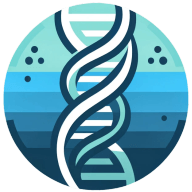7 Environmental Applications of Dna Sequencing and their Impact
The latest advancements in DNA sequencing are revolutionizing environmental science, offering unprecedented insights into ecosystems, species conservation, and sustainable resource management. This article explores ten cutting-edge applications of DNA sequencing that are transforming our understanding and protection of the natural world. Drawing on insights from leading experts in the field, it reveals how genetic analysis is becoming an indispensable tool in addressing critical environmental challenges.
- DNA Sequencing Reveals Microbial Bioindicators in Ecosystems
- Environmental DNA Tracks Rare Species Non-Invasively
- Genetic Analysis Detects Invasive Species Early
- Plant DNA Guides Endangered Species Restoration
- Sequencing Bacterial Genomes Combats Antibiotic Resistance
- Crop Genomes Enhance Agricultural Climate Resilience
- Fish DNA Informs Sustainable Ocean Management
DNA Sequencing Reveals Microbial Bioindicators in Ecosystems
DNA sequencing is being used to address environmental challenges through metagenomic analysis of soil and water ecosystems. This technique involves sequencing the collective DNA from environmental samples to identify and study microbial communities without needing to culture them in the lab.
Example: Monitoring Pollution in Aquatic Ecosystems
Environmental scientists use DNA sequencing to detect microbial bioindicators in rivers and oceans that respond to pollutants such as heavy metals, plastics, or oil.
By tracking changes in microbial populations over time, researchers can assess the health of the ecosystem and identify sources of contamination early.
Why This Is Impactful:
- Non-invasive and precise - No need to harm the environment to collect meaningful data.
- Early warning system - Detects subtle biological changes before visible damage occurs.
- Guides policy and remediation - Helps inform conservation strategies and clean-up efforts.
This application stands out because it allows for rapid, large-scale monitoring of biodiversity and ecosystem health, making it a critical tool in the fight against climate change and pollution.

Environmental DNA Tracks Rare Species Non-Invasively
One example of how DNA sequencing is being used to address environmental challenges is in monitoring biodiversity in endangered ecosystems. I worked on a project where we used environmental DNA (eDNA) sequencing to track the presence of rare species in a river system. Instead of physically capturing animals, which can disrupt their habitats, we collected water samples and analyzed the DNA traces left behind. This method allowed us to identify species that are difficult to detect through traditional methods, providing valuable insights into the health of the ecosystem. What makes this application particularly impactful is its non-invasive nature and efficiency. It helps scientists gather more accurate data on species populations and their habitats, which is crucial for conservation efforts. By using DNA sequencing, we're able to take a more proactive approach to preserving biodiversity, which is vital in the face of climate change and habitat loss.

Genetic Analysis Detects Invasive Species Early
DNA sequencing has become a powerful tool in identifying invasive species within ecosystems. By analyzing genetic material found in environmental samples, scientists can detect the presence of non-native organisms early on. This method allows for rapid response to potential ecological threats before they become widespread.
Early detection is crucial in preserving the balance of native ecosystems and protecting biodiversity. The use of DNA sequencing in this context has revolutionized conservation efforts, making them more efficient and cost-effective. To support these vital efforts, consider volunteering for local conservation projects or citizen science initiatives that use DNA sequencing to monitor ecosystems.
Plant DNA Guides Endangered Species Restoration
Genetic profiling plays a crucial role in restoring endangered plant populations. By analyzing the DNA of rare plants, scientists can understand their genetic diversity and health. This information guides breeding programs to increase genetic variability and resilience in struggling species.
Restoration efforts become more targeted and effective when backed by genetic data. The success of these programs offers hope for preserving botanical biodiversity for future generations. To contribute to plant conservation, start by learning about and supporting local botanical gardens and their endangered species programs.
Sequencing Bacterial Genomes Combats Antibiotic Resistance
The evolution of antibiotic-resistant bacteria is a growing concern in healthcare. DNA sequencing allows researchers to track changes in bacterial genomes over time. This information helps identify which genes are responsible for antibiotic resistance.
Understanding these genetic changes is crucial for developing new treatments and prevention strategies. By monitoring bacterial evolution, scientists can stay one step ahead in the fight against superbugs. To combat antibiotic resistance, always follow your doctor's instructions when taking antibiotics and educate others about the importance of proper antibiotic use.
Crop Genomes Enhance Agricultural Climate Resilience
Climate change poses significant challenges to agriculture, but DNA sequencing is helping improve crop resilience. By studying plant genomes, scientists can identify genes responsible for drought tolerance, pest resistance, and other beneficial traits. This knowledge allows for the development of more robust crop varieties through traditional breeding or genetic modification.
Improved crops can better withstand changing environmental conditions, ensuring food security for growing populations. The application of DNA sequencing in agriculture represents a fusion of ancient farming practices with cutting-edge technology. Support sustainable agriculture by choosing products from farms that use environmentally friendly practices and advanced breeding techniques.
Fish DNA Informs Sustainable Ocean Management
Sustainable fishing practices are critical for maintaining healthy ocean ecosystems. DNA sequencing provides valuable data to inform these practices by analyzing fish populations' genetic diversity. This information helps determine sustainable catch limits and identifies areas that need protection.
Genetic data can also reveal migration patterns and breeding habits, crucial for effective marine conservation. By using DNA analysis, fisheries managers can make more informed decisions to prevent overfishing and maintain ecosystem balance. To promote ocean health, choose seafood from sustainable sources and support organizations working on marine conservation through DNA research.

